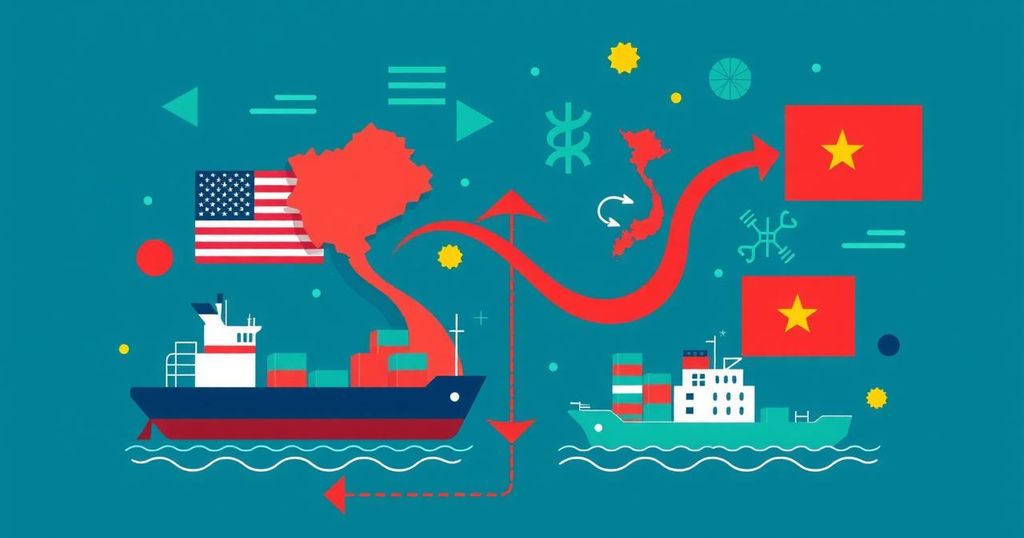Trump’s Trade Deal With Vietnam Raises Key Questions

- Trump’s trade deal with Vietnam includes a 20% tariff on goods.
- Vietnam will face a 40% tariff on transshipping foreign goods.
- Tariffs will likely affect American consumers directly, raising prices.
- Vietnam’s trade ties with China complicate U.S. tariff enforcement.
- The arrangement signals ongoing negotiations and economic strategies.
Trump Announces Vietnam Trade Tariff Arrangement
Trade talks between the United States and Vietnam have recently taken a significant turn, with President Donald Trump announcing an arrangement that seemingly promises mutual benefits. In his announcement, Trump declared that Vietnam will be subject to a 20% tariff on all goods entering the U.S. market, along with a staggering 40% tariff on any products transshipping through Vietnam. This, according to Trump, is in exchange for total access to Vietnamese markets for U.S. trade, a development that has raised eyebrows and sparked questions about the implications for both nations’ economies.
Examining the Implications of Tariffs
However, the details warrant a closer look. Vietnamese General Secretary Tô Lâm has indicated that trade relations are not yet finalized, suggesting that negotiations will continue. For practical understanding, tariffs are typically paid by American importers, not the exporting countries. Therefore, while Trump’s deal sounds appealing, it is American consumers who will ultimately bear the brunt of those tariffs. Additionally, it’s critical to note the term “transshipping”—a strategy often used by Chinese manufacturers to bypass U.S. tariffs by exporting goods through third-party nations like Vietnam. This has posed a significant concern for the U.S. government as it attempts to navigate complex international trade relationships.
Future Consequences of Trade with Vietnam
As this trade arrangement unfolds, questions emerge about the specific tariff rates that will apply, especially when dealing with products that contain Chinese components. To put it bluntly, the potential for misinterpretation is high, and the ramifications could affect various sectors of the U.S. economy. Moreover, Vietnam’s close ties to China complicate the situation further. They are currently the largest trading partner for Vietnam and perhaps a variable in how the U.S. plans to enforce these tariffs. Although there are talks of the tariffs striking a better balance for American farmers—who are eager to send approximately $3 billion worth of agricultural goods to Vietnam—the long-term effects of this trade deal remain to be seen.
In summary, President Trump’s recent trade deal with Vietnam, involving new tariffs and promises of market access, signals a complicated path forward for U.S.-Vietnam relations. The intricacies of transshipping and potential repercussions for American consumers underscore the challenges that may arise from this agreement. As the U.S. seeks to negotiate more favorable terms, the outcome may hinge on its relationship with both Vietnam and China, making the situation dynamic and ever-changing.








